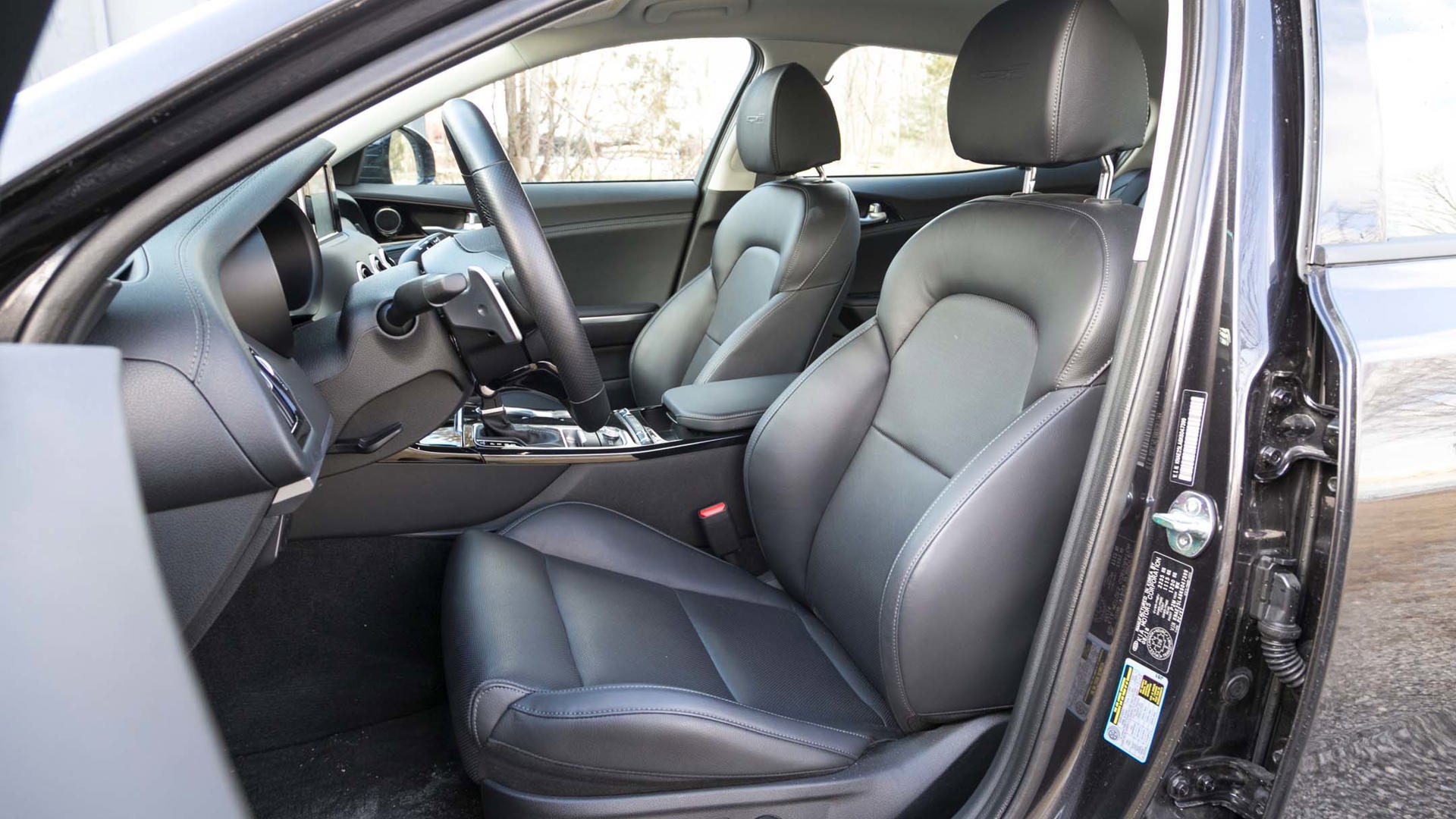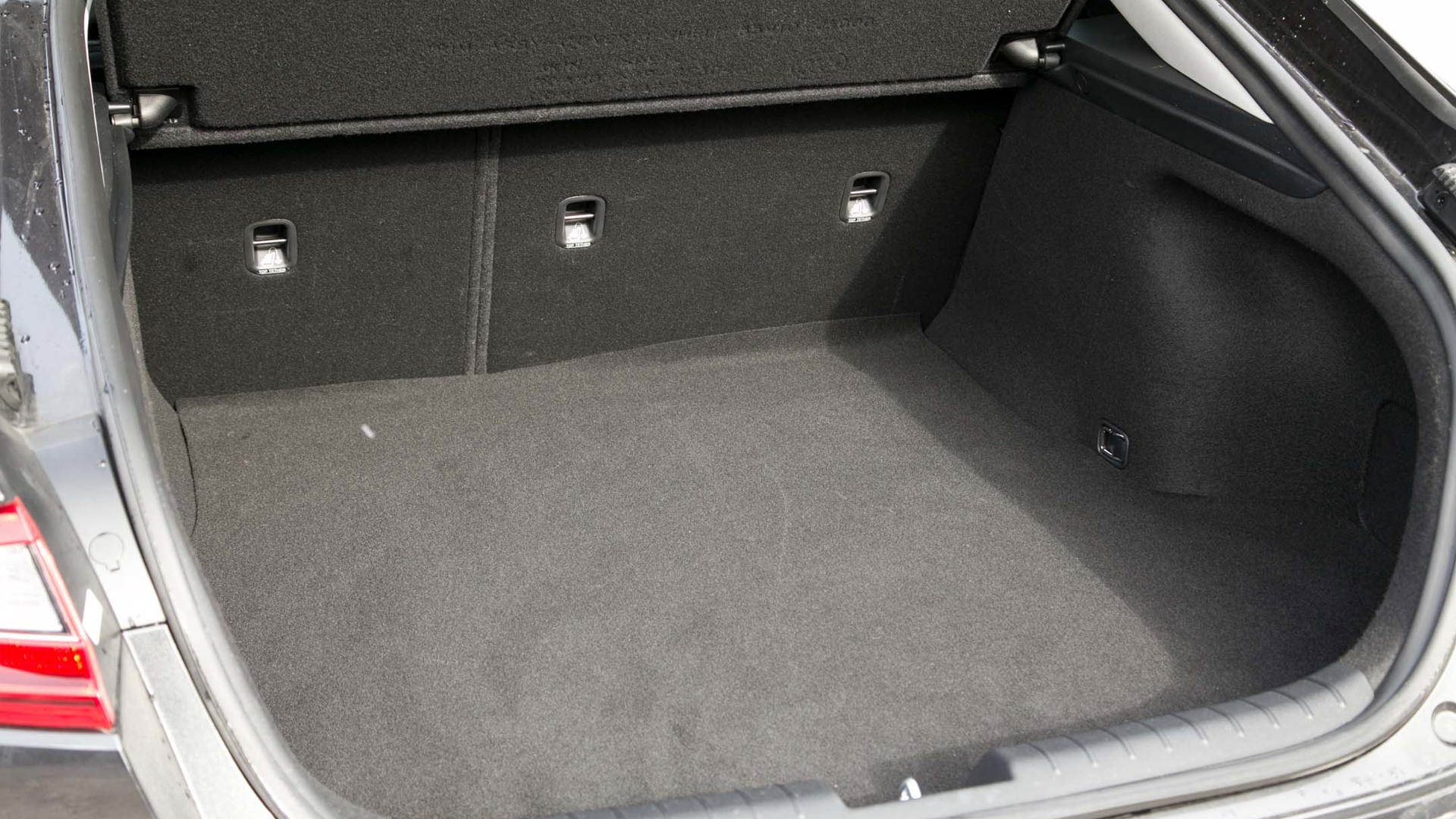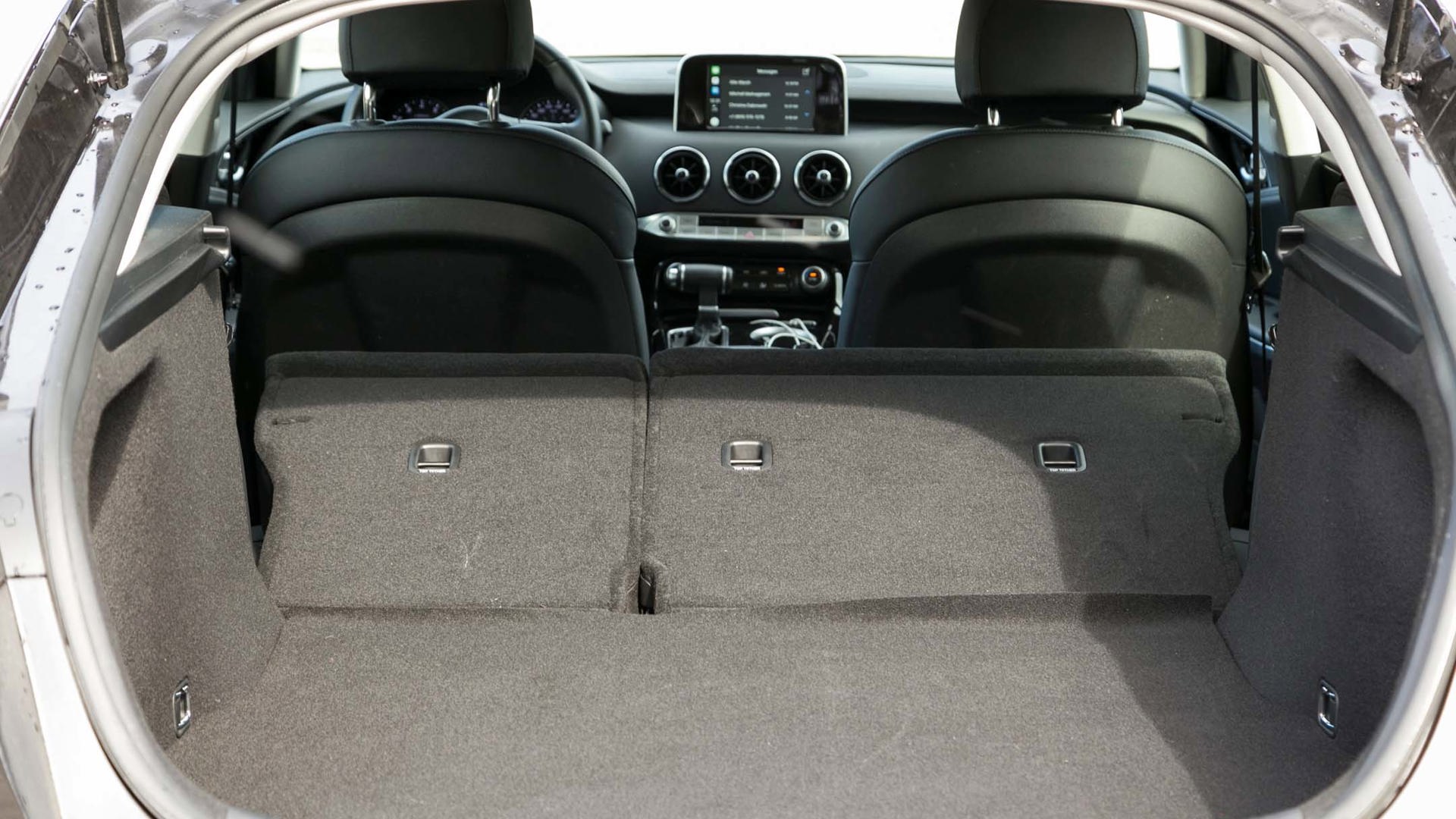 AutoTrader SCORE
AutoTrader SCORE
-
STYLING8/10
-
Safety8/10
-
PRACTICALITY8/10
-
USER-FRIENDLINESS8/10
-
FEATURES7/10
-
POWER7/10
-
COMFORT7/10
-
DRIVING FEEL7/10
-
FUEL ECONOMY7/10
-
VALUE8/10
Making a sequel to a celebrated and very popular performance can be risky business.
A far more engaging car to drive than… well, than anything else it competes against.
When done right, it can go so well that it overshadows the original. In terms of movies, think Godfather II, Terminator 2, or The Empire Strikes Back. But sometimes it proves to be such a colossal flop that it makes one wonder just what its creators were thinking (Speed 2, Caddyshack 2, Police Academy 7).
Kia’s Stinger was a revelation when it reached dealerships last year, and a quick look at the specs suggests why. Its twin-turbo V6 puts out 365 horsepower and an even more scintillating 376 lb-ft of torque. What’s more, its styling and handling possess significant German influence, and the media went nuts comparing a Kia to the likes of BMW’s 440i Gran Coupe and Audi’s S5 Sportback – two exceptional machines.
Since its release, the Stinger has scooped up a large bounty of awards hardware, including most recently, winning the Automobile Journalists Association of Canada’s award for Best Large Car in Canada for 2019.
It’s no wonder then, that Kia would want to build on that success, hence this 2019 Stinger GT-Line sequel.
The formula seems right. Cost is down and efficiency is up – two areas nobody will complain about – but it’s been brought about by an engine downgrade. Gone is that sizzling six-cylinder, replaced by a 2.0-litre, turbocharged four-cylinder engine shared with the equally revered Genesis G70 sedan (a cousin to the Stinger with many shared platform components).
The smaller engine dispenses 255 horsepower and 260 lb-ft of torque. Although the GT-Line is 140 kg lighter than its V6 brethren, a deficit of that much power and torque is definitely felt throughout the rev range. If you’re considering a Stinger purchase, you’d be advised not to try the V6 version first because it’s tough to find the four-cylinder anywhere near as exciting afterward.
This is indicative of the Stinger’s challenge as a sequel. The GT-Line lacks the larger, staggered wheel and tire setup of the V6 version, plus its Brembo brakes.
Compared to the GT and GT Limited trims, the GT-Line is dynamically a bit of a letdown, but compared to anything else it competes with on price (full-size sedans less than $40K), it is pretty remarkable.
Damning the 2.0-litre Stinger for its engine or tires is unfair, however. In its own right, it is a far more engaging car to drive than… well, than anything else it competes against. It’s still snappy, it’s just not as scintillatingly quick (nor as melodic) as its V6 sibling. There’s a little turbo lag off the line, and in Comfort drive mode (which is the car’s default after every restart), the transmission always seeks the tallest gear it can in the interest of efficiency.
The Buick Regal Sportback mirrors the Stinger's dimensions and also offers a 2.0-litre four-cylinder turbo engine that puts out roughly the same power. The Buick weighs more, but offers greater cargo and passenger space. Unless you opt for the GS trim, however, the Regal is not as engaging to drive as the Stinger.
The Stinger’s steering particularly stands out. It’s lively, quick, and sharp, and it offers more road feel than most cars these days – and that’s with a set of compliant Yokohama winter tires to dull the senses. In an era dominated by roly-poly SUVs, the Stinger offers a level of driver engagement and handling composure typically found in true sports cars or very expensive sport sedans.
With rapid directional changes, the mass and length of the Stinger is noticeable, but roll, pitch, and dive motions are well managed. Braking is very good too, with good initial bite and an easily modulated pedal.
The Stinger provides a good trade-off between capable handling and a comfortable ride, and it all feels very European. This isn’t surprising given that Kia and Hyundai have scooped up a large number of engineers and stylists from Germany’s prominent carmakers.
Despite being such an enchanting driver’s car, the Stinger is also remarkably practical. With standard all-wheel drive (in Canada), and a hatchback cargo hold that expands to over 1,100 L, the Kia makes some compelling arguments over a similarly priced Honda Accord 2.0T. Likewise, aside from ground clearance, there’s little reason to choose a mid-size SUV over the Stinger.
Passenger life in the Stinger is pretty sweet too, with large-car space available. Seating is swathed in black leather and while top-trim Stingers feature premium leather, the standard hides are still superior quality to what many manufacturers offer. The front seats are heated, but not cooled, and they’re sufficiently bolstered to hold an occupant in place without being overdone and requiring gymnastics to get in or out of.
Kia has aced the interior design game for years now with clean and timeless designs that, unsurprisingly, resemble Audis. The Stinger’s cockpit follows suit with a pair of big, round primary gauges for speedo and tach, and principal controls that utilize good old-fashioned buttons and knobs for key operations. If there’s one nit to pick here, it’s that the low-contrast row of silver buttons can be difficult to read.
Kia’s UVO infotainment system is excellent too, and integrates Apple CarPlay and Android Auto. It’s a good thing, since this trim does not come with a baked-in navigation system. Sound quality is okay from the audio system, but if you want the high-end Harman Kardon system, you need to splash out for the top-of-the-line model.
In addition to the lack of navigation system, the GT-Line also does away with a sunroof; and the active, semi-autonomous driving aids that manufacturers are including for free at this price are absent in the Kia. Truthfully, I didn’t miss any of that stuff and heartily applaud Kia for offering a true driver’s car in an age when doing so seems suicidal to sales.
There are all sorts of ways consumers could – and do – spend their $40,000 on vehicles these days, and it seems a decreasing number of them are inclined to do so not only on a car, but one that’s so sharply focussed on driving enjoyment. It’s virtually peerless for the money in terms of its harmonious balance of all-weather, all-purpose practicality and driving fun, especially with the flawless build quality of our test machine.
Kia’s Stinger is deserving of all the positive attention it is receiving because it really is a great car, even with the smaller engine in the GT-Line.
As a sequel, though, I still prefer the original and would find a way to make up the extra $5,000 and get my Stinger with the V6.
| Engine Displacement | 2.0L |
|---|---|
| Engine Cylinders | I4 |
| Peak Horsepower | 255 hp @ 6,200 rpm |
| Peak Torque | 260 lb-ft @ 1,400–4,000 rpm |
| Fuel Economy | 11.1/8.1/9.7 L/100 km cty/hwy/cmb |
| Cargo Space | 660 / 1,158 L seats down |
| Model Tested | 2019 Kia Stinger GT-Line AWD |
| Base Price | $39,995 |
| A/C Tax | $100 |
| Destination Fee | $1,785 |
| Price as Tested | $42,080 |
|
Optional Equipment
$200 – Thunder Grey paint $200
|
|






































